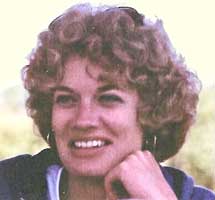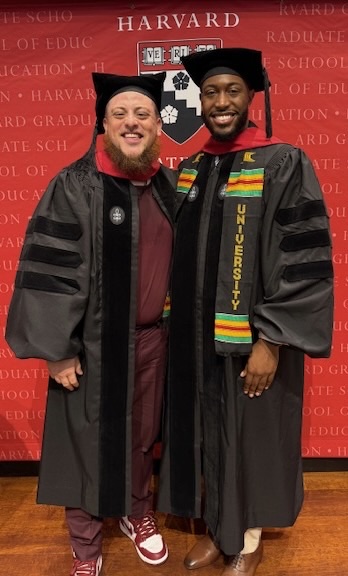Theodore Martinez, who was honored as an Alma Exley Scholar in 2018, has received a Doctor of Education degree from the University of South Carolina.

and uncle, Rafaela Rivera and Harry Martinez.
Dr. Martinez is a fourth-grade teacher at the Academy of International Studies, a public elementary school in South Windsor operated by the Capitol Region Education Council (CREC).
While teaching there, he also has taught in the Connecticut Teacher Residency Program, a program that offers an alternate route to certification through residency experience, and he has taught college-level courses in the Connecticut Department of Corrections through the Second Chance Pell Program.
Others with Doctorates
Dr. Martinez, who grew up in Hartford and Windsor, is the sixth Alma Exley Scholar to have earned a doctorate after being honored by the scholarship program. The others are Miguel Cardona, Khalil Graham, Justis Lopez, Vernon-James Riley, and Violet Jiménez Sims.
Three other Alma Exley Scholars already had doctorates when they received their teaching certification through Connecticut’s Alternate Route to Certification. They are Sibani Sengupta, Santosha Oliver, and Zakiah Parrish.
This means that nine of the 40 Alma Exley Scholars honored since 1995 have doctorates.

Multiple Degrees
Dr. Martinez, left, with other members of his doctor of education cohort.
Dr. Martinez holds a bachelor’s degree from the University of Connecticut, a master’s degree in psychology from the University of Southern New Hampshire, and a master’s degree in education from the University of Hartford. He is working on completing a Certificate in Advanced Graduate Studies in Advanced Educational Leadership with the University of New England. It’s a two-year program which will lead to his 092 Intermediate Administrator Certification. He is a graduate of the Metropolitan Learning Center, a CREC high school in Bloomfield.
Different Perspectives of Diverse Students
Dr. Martinez’s doctoral dissertation is titled “Freedom Looks Different for Everyone: Transforming Pre-Packaged Literacy Programs Through Critical Literacy.” In his doctoral studies, he concluded that pre-packaged educational programs erase the identities of students who are culturally and linguistically diverse.
He observed that fourth graders were being taught about the Revolutionary War from a Eurocentric, monocultural perspective. Therefore, he developed an approach, rooted in critical literacy, to incorporate the perspectives of the variety of people living in America at that time: enslaved and free Blacks, Native Americans, and white colonialists including Loyalists and Patriots.
As a result of his research, one of his students was able to identify that “Everyone wanted freedom, but freedom looked different for everyone.”
Dr. Martinez asked, “How do I, as a fourth-grade teacher, use literacy to increase representations of culturally and linguistically diverse learners? What trends emerge in student learning when fourth graders utilize critical literacy to challenge master narratives presented in pre-packaged literacy programs?”
In teaching content such as the American Revolution, teachers need to find ways to increase representations of culturally and linguistically diverse learners and critical literacy offers a framework to do so, Dr. Martinez concluded.
-0-






